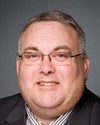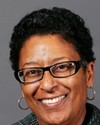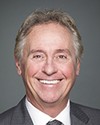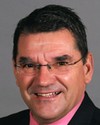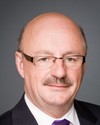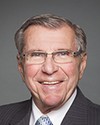Thank you, Mr. Chairman. I'm pleased to meet with the committee to discuss certain issues set out in its proposed work plan to review the Referendum Act.
With me today are Stéphane Perrault, senior general counsel and Jean-François Morin, legal counsel.
In my remarks today, I will be drawing the committee's attention to various points that I feel should be taken into account during the review of the referendum regime.
Let's begin with the legislative framework for referendums. As things stand today, two main instruments govern federal referendums in Canada: the Referendum Act and the Canada Elections Act as adapted by regulations made by the Chief Electoral Officer.
The committee proposes to review various legal frameworks that could replace the one introduced in 1992. I will be talking today about two types of frameworks that could be considered, as well as various options relating to each.
The first type involves a partial referendum statute. In this scenario, most of the operational questions are resolved through adaptation of the Canada Elections Act. This type of legal framework poses certain difficulties, however, to ensure the harmonious integration of the operational provisions necessary for the conduct of a referendum, and as regards the entity charged with this integration.
One option here would be to have a referendum statute without any companion regulations or instruments, where it would simply be provided that certain aspects of the Canada Elections Act apply to referendums with “any adaptations that may be required”.
This simple approach has some major disadvantages, however, related to the fact that the adaptation of the Canada Elections Act by the Chief Electoral Officer does not have the force of law. The absence of a precise, authoritative text can create uncertainty as to the applicable rules and give rise to challenges. This is especially problematic when it comes to enforcing legislation. In my opinion, this is not the best approach.
Another option would be to have companion regulations. Under the current Referendum Act, it is the Chief Electoral Officer who makes the regulations. The regulations adapting the Canada Elections Act could be the subject of a negative or positive resolution by Parliament. Thus, parliamentarians could have a more formal say on the regulations.
The second type of legal framework consists of a complete referendum statute. Although more cumbersome, this approach would help avoid or resolve the difficulties associated with a partial system. One option with this type of legal framework would be to adopt a separate referendum statute containing all the operational provisions necessary to hold a referendum.
This is the model Australia has adopted to hold referendums on proposed changes to the constitution. This idea has merit, particularly for situations where a general election and a referendum are held separately. But this solution would need to be fine-tuned in cases where an election and a referendum are held simultaneously, since coordinating provisions would have to be made to avoid legislative conflicts. Each time the Canada Elections Act is amended, it would be necessary to make corresponding amendments to the referendum statute.
A second option would be to integrate into the Canada Elections Act all of the provisions enabling referendums to be held. This would make it easier to update the rules governing a referendum, which in turn would make for a clearer process. This, too, has merit as a potential solution, especially if a general election and a referendum are held at the same time.
Concerning the referendum, the committee intends to study the possibility of holding a general election and a referendum simultaneously. At least two Canadian provinces, Ontario and British Columbia, have recently experimented with this. Obviously, holding an election and a referendum at the same time has its advantages when it comes to costs. Advantages which I consider significant.
Also, this formula might have a positive impact on voter turnout for one or both events. Naturally, the election and referendum periods would need to be harmonized if they were held simultaneously. The question of printing special ballots for a referendum, raised during my appearance on October 8 and 20, should be included in this analysis. Holding an election and a referendum simultaneously poses challenges, mainly when it comes to political financing.
In particular, it may be difficult to distinguish the referendum debate from the election debate and to compartmentalize the expenditures, especially for advertising. In this regard, the committee might want to consider the relevance of referendum committees when a referendum takes place at the same time as a general election. The vehicle already offered by political parties, candidates and third parties during an election period could prove sufficient to efficiently drive a debate on the referendum question. The absence of referendum committees in an election period would reduce the difficulties and the risk of abuse associated with the participation of many types of stakeholders subject to a variety of rules.
I'll now turn to the matter of referendum committees and their funding methods.
The committee may be looking into the possibility of consolidating the referendum committees into for and against camps and imposing a spending limit on each camp. This concept is used in Quebec, where these groups are called umbrella committees, or national committees. In particular, the umbrella committee model makes it easier to limit spending and control contributions.
The main caveat associated with this option, as opposed to the option of providing for an indeterminate number of committees supporting each camp, has to do with its complexity and the need to maintain the system's internal coherence. The model that is ultimately chosen must be flexible enough to allow the participation of a great number of stakeholders, be they national, provincial, or local. This is a challenge that must not be underestimated at the federal level. The model must also take account of constitutional parameters governing freedom of expression by groups unable or unwilling to affiliate themselves with one camp or the other, a question the Supreme Court of Canada considered in the case of Libman.
With regard to the spending limit imposed on referendum committees, the current federal regime is based on the number of electoral districts in which the committee intends to be active. No doubt, this distinction may be seen by some committees as an invitation to declare a desire to act nationally to increase their spending limit. The intent criterion could be replaced by an objective criterion like a national limit or a combination of provincial and national limits. This idea, much like the system of limits on third party election advertising spending, has its advantages in terms of fairness. It could be better adapted to the referendum debates that take place at the provincial level, such as is often the case where constitutional reforms are concerned.
Last, the manner in which the referendum committees are funded is also an important issue. The current Referendum Act does not place a ceiling on contributions and allows donations from corporations and unions. This in itself is not an anomaly. Referendum committees, like third parties under the Canada Elections Act, do not aspire to power. Either can receive contributions that are not permitted for candidates or political parties.
The current system also allows financial participation by the government in funding referendum committees. If limits are placed on the origin or value of the contribution a referendum committee can receive, parliamentarians should consider whether minimum public financing should be provided to allow an informed debate on the referendum question. If parliamentarians conclude that such public funding is desirable, the question of distributing these sums between the two camps, and more importantly among each camp's committees, should also be addressed.
I will now address the interaction of federal and provincial referendums.
During the 1992 referendum, certain problems arose owing to the simultaneous conduct of two separate referendums--one federal and the other provincial--held the same day and on the same question. Since the rules differed from one referendum system to the other, particularly when it came to the procedure for revising the list of electors or for advance polling dates, election administrators had difficulty keeping electors properly informed, particularly in border areas for the two systems. Furthermore, the difference in the rules used by the two systems to determine who qualified as an elector was at the heart of the decision of the Supreme Court of Canada and Haig.
Territorial overlap also makes it more complicated to control spending by referendum committees in regions where the media disseminate referendum advertising that can reach electors in both systems.
Another challenge that had to be tackled in 1992 was coordinating federal and provincial provisions prohibiting early broadcasting of results. The provision of the Canada Elections Act dealing with this question does not take into account that the results of an event governed by provincial statute can influence the result of a federal event taking place concurrently. Because this risk was presented in 1992, the Chief Electoral Officer of Canada had to make a regulation to extend the scope of this provision to the results of the Quebec referendum. In most cases, difficulties of this sort are part and parcel of holding two parallel events.
Mr. Chairman, this concludes my presentation. At this stage of your proceedings, I primarily wanted to bring to your attention issues to consider, rather than solutions.
I will follow with interest the committee's review of the Referendum Act. It will be my pleasure to appear before you toward the end of this review, when certain strategic choices have been examined. At that point I will be better able to answer certain questions of a more technical nature that may have arisen during the proceedings.
My colleagues and I are now ready to answer your questions.
Thank you.

